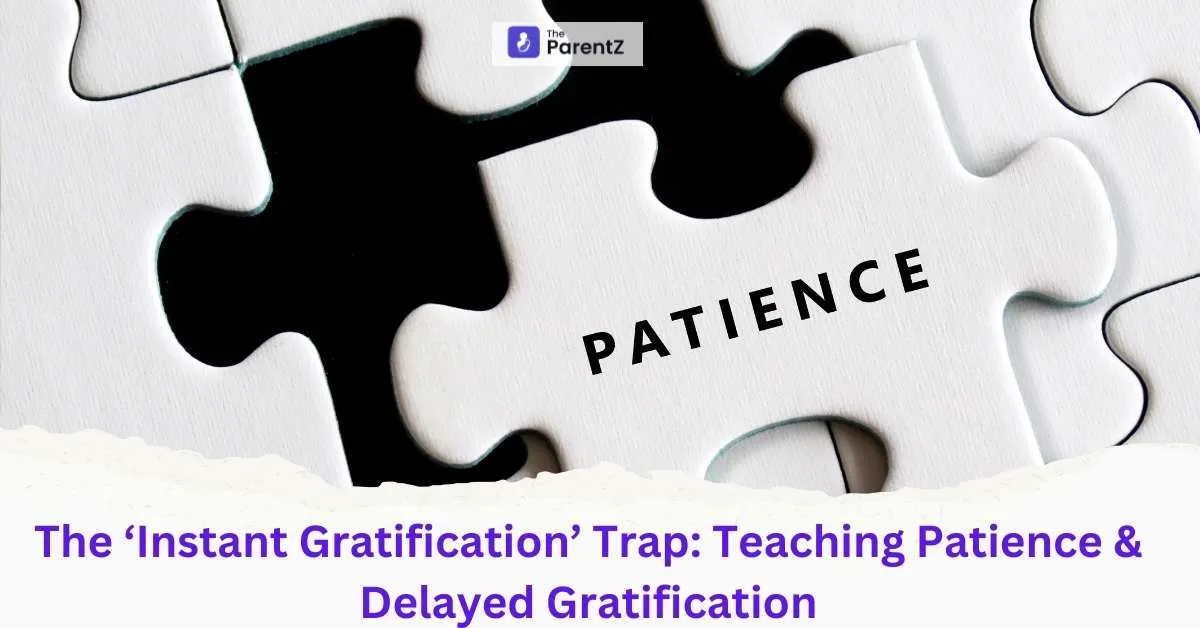We live in an era of immediate rewards. Downloadable entertainment, same-day deliveries, and 24/7 connectivity have made life faster and more convenient than ever. While these advancements offer undeniable benefits, they also contribute to a culture of instant gratification. Children, whose brains are still developing impulse control and long-term thinking, are especially vulnerable. Teaching the skill of delayed gratification is crucial for helping them handle frustration, build resilience, and succeed in a world that doesn’t always offer quick solutions. This article examines the challenges posed by our instant gratification culture and provides actionable strategies to teach children the value of waiting and patience.
Understanding Instant Gratification
Instant gratification refers to the desire for immediate fulfillment of needs and wants. Whether it’s a toddler who wants a toy right now or a teenager craving online validation, the urgency to satisfy these desires often overshadows long-term benefits or consequences. In moderation, seeking immediate pleasure isn’t inherently detrimental. Problems arise when children become so accustomed to immediate rewards that they struggle with tasks requiring sustained effort or perseverance. From academic achievements to complex emotional relationships, many important aspects of life rely on patience, self-control, and the ability to delay rewards.
The Psychological Component
Childhood is a critical period for developing executive functions in the brain, including impulse control, planning, and emotional regulation. If these skills aren’t honed, children may grow up to experience difficulty managing stress, maintaining healthy habits, and setting long-term goals. Research, such as the famous “Marshmallow Test,” has shown that children who can delay gratification tend to have better academic and social outcomes later in life. This correlation exists because patience often correlates with discipline, a quality crucial for navigating personal and professional challenges as adults.
The Role of Technology
Smartphones, tablets, and high-speed internet have heightened the expectations for immediate responses. Children can stream a new TV episode without waiting for a scheduled broadcast, receive near-instant feedback on social media posts, or access countless games with a quick tap. While these technologies can have educational benefits and foster creativity, they also risk making the waiting process feel foreign or intolerable. By the time they need to wait for a teacher’s feedback on a school project or endure the natural pace of real-life problem-solving, they might become disproportionately frustrated.
Consequences of Failing to Delay Gratification
A child who lacks patience may quickly abandon activities that don’t provide instant feedback or visible progress. This could lead to a limited range of interests, as they consistently opt for quick-fix rewards. Frustration may also manifest in negative behaviors—tantrums for younger kids or impulsive decision-making in teenagers. Academically, these children may struggle with revision, homework completion, or any task that requires sustained effort. Socially, the inability to manage impulses can strain friendships, as peers may find it challenging to interact with someone who frequently seeks immediate gratification at the expense of group harmony.
Teaching the Value of Waiting
1. Introduce Small Delays: Start small. If a child asks for a snack, set a short timer—maybe two or three minutes—and explain that they can have it when the timer goes off. Gradually extend the waiting period, praising their patience each time. This practice helps children see that they can handle minor frustrations and that waiting often pays off.
2. Set Goals and Celebrate Milestones: Encourage children to set both short-term and long-term goals, such as completing a reading challenge or mastering a musical piece. Celebrate each milestone along the way, reinforcing the idea that long-term efforts bring greater rewards. Visual aids, like progress charts or sticker boards, can make this experience more tangible and motivating.
3. Model Patience: Children learn by observing adults. If they see you lose your temper in traffic or grumble when a website loads slowly, they will internalize that behavior. Conversely, if you remain calm in queues or practice mindfulness when facing delays, children are more likely to adopt these coping strategies. Share your own experiences—tell them about a time you waited for something important and how it was worth it in the end.
Structured Activities to Promote Delayed Gratification
1. Board Games and Puzzles: Traditional board games teach turn-taking, a fundamental aspect of patience. Children must wait for their turn to play, which inherently models delayed gratification. Similarly, completing a puzzle requires sustained focus and incremental progress, helping kids see the value of persevering over time.
2. Baking and Cooking: Involving children in the kitchen is a hands-on lesson in patience. They learn that cookies need time in the oven or dough needs rising before it can be baked. Seeing the final product emerge after waiting can be a powerful illustration that good things often require time and effort.
3. Gardening: Planting seeds and waiting for them to sprout is another effective exercise in patience. Children water the soil daily, watch for signs of growth, and understand that nature follows its own timeline. The satisfaction of eventually seeing a flower bloom or picking fresh vegetables reinforces the reward of waiting.
Balancing Quick Rewards and Long-Term Goals
Even as you teach children to wait, it’s important to acknowledge that instant gratification has a place in everyday life. Immediate rewards can boost motivation, especially for younger children who may need quick positive feedback. The key is striking a balance. For instance, a child can earn small treats or tokens for completing daily chores, but larger prizes or privileges might require saving up tokens over time. This layered approach ensures they appreciate both short-term and long-term rewards.
Incorporating Digital Tools Wisely
While technology can contribute to impatience, it can also be harnessed for good. Certain apps focus on building focus and mindfulness, offering guided exercises that train the mind to remain calm and attentive. Time-tracking apps can help children visualize how much time remains until a reward. Similarly, educational games with leveling systems encourage incremental progress, teaching kids that persistence pays off as they gradually unlock new levels or features. However, supervision is crucial; these tools should complement, not replace, real-world experiences of working toward a goal.
Open Communication About Emotions
Learning to delay gratification isn’t just about waiting; it’s also about understanding and managing the emotions that arise during waiting. Children may feel boredom, frustration, or even anger. Encourage them to express these emotions verbally, helping them understand that discomfort is temporary and can be managed. Techniques like deep breathing or counting to ten can be employed when a child feels particularly restless. By creating a safe space for emotional expression, you make it easier for them to endure periods of delayed reward.
Reinforcing Positive Behavior
When a child does display patience—whether waiting their turn in a conversation or diligently working on a school project—acknowledge it. Verbal praise, high-fives, or special privileges can reinforce the behavior you want to see more of. Positive reinforcement should emphasize the quality of patience itself: for example, “I’m proud of how you waited for your sibling to finish speaking before you responded,” or “It was great to see you keep trying until you solved the puzzle.”
Potential Pitfalls and How to Avoid Them
- Excessive Rewards: Rewarding a child too frequently or lavishly can undermine the lesson. If every small act of waiting brings a big payoff, children may become motivated solely by external rewards rather than internal satisfaction.
- Unrealistic Expectations: Teaching delayed gratification is a gradual process. Expecting a child to suddenly shift from immediate demands to patiently waiting for everything can lead to frustration on both ends. Incremental steps are more effective.
- Inconsistency: If rules change daily or parents themselves waver in enforcing waiting periods, children receive mixed messages. Consistency fosters stability, making it easier for them to develop the habit of patience.
The Long-Term Benefits
Mastering delayed gratification does more than just make childhood smoother—it lays the groundwork for future successes. Patience and self-control are attributes that underpin academic achievements, healthy relationships, and personal goal attainment. A teenager who has learned to put in daily study hours without seeing immediate results will be better prepared for college exams. An adult who can budget finances or invest time in long-term career development will reap benefits that an impulsive mindset might miss. In essence, the ability to manage impulses and wait for greater rewards is a life skill that transcends age, benefiting individuals throughout their personal and professional journeys.
Conclusion
In a world saturated with digital conveniences and immediate responses, teaching children to delay gratification can be challenging but is undoubtedly critical. It equips them with the emotional and cognitive tools necessary to navigate frustration, focus on long-term goals, and develop resilience. Through structured activities like board games, cooking, or gardening—and by modeling patient behavior and providing consistent opportunities for practice—parents can instill a sense of discipline that serves children well into adulthood. The result is a balanced individual who can appreciate the joys of a quick reward yet remains prepared to work steadily toward more meaningful, long-term achievements.






